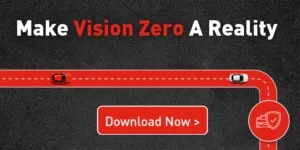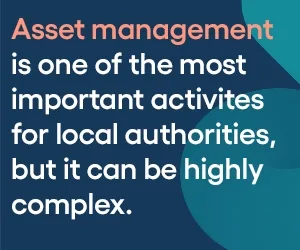The vision of transport and highways authorities is simple: ‘that every trip of every kind on our streets, roads, and highways should end with a safe arrival’.
This is a sentiment held firm by smartmicro and is at the heart of most international government politics. Many traffic related injuries around the world occur at intersections. The safety of Vulnerable Road Users (VRUs), like pedestrians and cyclists, is a high priority for any safety strategy.
Reducing crash-related fatal incidents is also on the agenda of town and city planners. While delivering truly autonomous driving and smart city infrastructure is the ultimate goal for the future, there is a quiet revolution going on in our towns and cities to replace traditional detection technologies with more advanced radar and camera sensor solutions.
smartmicro intends to make roads safer for all road users. But how can traffic fatalities and serious injuries prevented through intersection management? Smartmicro developers are looking to the future and here is a quick glimpse at our
Today, detectors can independently manage the directions of a well-equipped signalised intersection but often result in blind spots at the inner part of the intersection leaving movements across the intersection difficult to monitor. If VRUs remain unseen motorised traffic cannot be controlled in real-time thus allowing safe passage.
A smart intersection, including multiple sensors and an edge computer running sensor fusion software, provides a full overview. This covers all approaches and the inner previously less monitored intersection zone, tracking the position, velocity, and class of all objects in real-time. The communication between the sensors enables seamless tracking of all traffic participants – from a small child to a large truck – throughout the entire intersection. Utilising data fusion between the integrated sensors, the perception of the environment is improved immensely. A rich set of collated data helps to identify potential safety hazards, triggering appropriate safety measures in real-time, such as flashing warning signals, traffic light adjustments, or messages to the drivers of connected vehicles via V2X communication. This means that vehicles can literally “see around the corner” in all directions of the intersection, knowing the traffic situation even before they arrive. This gives smart sensors at intersections a high value, especially during the time when vehicles connected to each other are still rare.
Additionally, a combination of radar sensors with cameras, along with data fusion – a hybrid sensor system – appears most promising. This development will deliver reliable data under all weather and lighting conditions. Radar sensors uniquely provide true speed (Doppler) measurement, can deliver 4D data, have the longest range, and are maintenance-free.
The benefits of cameras lie in the visualisation of a traffic scenario and the advanced classification of traffic objects. In the automotive sensor world, combining radar sensors and cameras has been the best practice choice for many years. The full system offers fail-safe features, such as blind and rain detection, misalignment reporting of the sensors, and interference suppression, which ensures dependable operation.
The main advantages of intersection management solutions are firstly the enhanced safety for vulnerable road users. This is especially true for pedestrians and cyclists who will be better protected as they are reported to connected vehicles, thus reducing accidents. Secondly, broadcasted data can be fused with the vehicle’s onboard sensors (collective perception).
The signalised intersection of the future will be connected and smart – smarter than today. The aim is to make roads safer and to optimise traffic flow but also reduce travel times, thus contributing to reduced pollution and hence greener cities.
PIC-SMARTMICRO




























